
Arnold Rüütel is an Estonian politician. He was the third President of Estonia from 8 October 2001 to 9 October 2006. Rüütel was the second president of the country after the end of the 1944–1991 Soviet occupation, and the restoration of the independent Republic of Estonia on 20 August 1991.
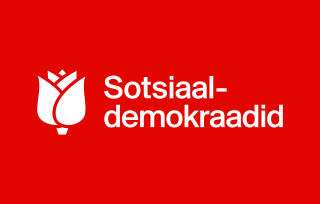
The Social Democratic Party is a centre-left political party in Estonia. It is currently led by Lauri Läänemets. The party was formerly known as the Moderate People's Party. The SDE has been a member of the Party of European Socialists since 16 May 2003 and was a member of the Socialist International from November 1990 to 2017. It is orientated towards the principles of social-democracy, and it supports Estonia's membership in the European Union. From April 2023, the party has been a junior coalition partner in the third Kallas government.

Toomas Hendrik Ilves is an Estonian politician who served as the fourth president of Estonia from 2006 until 2016.
Estonia elects a legislature on the national level. The Riigikogu has 101 members, elected for a four-year term by proportional representation with a 5% electoral threshold. A head of state – the president – is elected for a five-year term by parliament or an electoral college. Locally, Estonia elects local government councils, which vary in size. Election law states the minimum size of a council depending on the size of municipality. Local government councils are elected by proportional representation too.
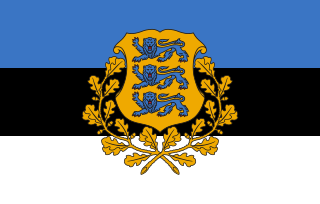
The president of the Republic of Estonia is the head of state of the Republic of Estonia. The current president is Alar Karis, elected by Parliament on 31 August 2021, replacing Kersti Kaljulaid.

Parliamentary elections were held in Estonia on 7 March 1999. The newly elected 101 members of the 9th Riigikogu assembled at Toompea Castle in Tallinn within ten days of the election. The elections proved disastrous for the ruling Estonian Coalition Party, which won only seven seats together with two of its smaller allies. Following the elections, a coalition government was formed by Mart Laar of the Pro Patria Union, including the Reform Party and the Moderates. It remained in office until Laar resigned in December 2001, after the Reform Party had left the same governing coalition in Tallinn municipality, making opposition leader Edgar Savisaar new Mayor of Tallinn. The Reform Party and the Estonian Centre Party then formed a coalition government that lasted until the 2003 elections.

Ene Ergma is an Estonian politician, a member of the Riigikogu, and scientist. She was a member of the political party Union of Pro Patria and Res Publica and, before the two parties merged, a member of Res Publica Party. On 1 June 2016, Ergma announced her resignation from the party, because the party had lost its identity and turned populist.

An indirect presidential election took place in Estonia on August 29, 2011. There were two candidates: incumbent president Toomas Hendrik Ilves and European parliament deputy Indrek Tarand. For the first time in the country's post-Soviet history, only one round took place, as Ilves was able to secure the necessary two-thirds majority to get re-elected without a runoff. Ilves received 73 votes while Tarand obtained only 25. One vote was blank and two were disqualified. Ilves was supported by the ruling Estonian Reform Party and Union of Pro Patria and Res Publica, as well as the Social Democratic Party, to which he formerly belonged. Tarand was supported by the Estonian Centre Party.

Presidential elections were held in Estonia on 20 September 1992, alongside parliamentary elections. As no candidate received over 50% of the vote, a second round was held in Parliament on 5 October 1992, in which Lennart Meri was elected. Voter turnout in the public vote was 68%.

An indirect election took place in Estonia in 2016 to elect the president of Estonia, who is the country's head of state. The Riigikogu — the Parliament of Estonia — elected Kersti Kaljulaid to be the next head of state of Estonia to succeed Toomas Hendrik Ilves, who had served his second and final term as president. Kaljulaid is the first female head of state of Estonia.
Allar Jõks is an Estonian lawyer and the former Chancellor of Justice. He was proposed to the office by President Lennart Meri and served between 2001 and 2008. He was proposed again by Toomas Hendrik Ilves in December 2007, but the Riigikogu voted against the appointment.
Ülle Aaskivi was an Estonian lawyer, politician, and public official. Aaskivi was elected a member of the Estonian Supreme Soviet in 1990 and the Estonian Constitutional Assembly, as well as one of the ratifiers of the Constitution of Estonia who voted for the Estonian restoration of Independence. She was elected to the Riigikogu for the Social Democratic Party of Estonia.
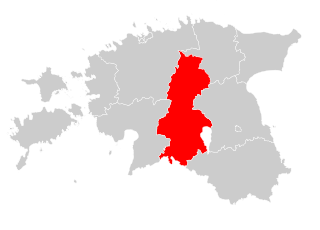
Electoral district no. 8 is one of the 12 multi-member electoral districts of the Riigikogu, the national legislature of Estonia. The district was established as electoral district no. 7 in 1995 following the re-organisation of electoral districts. It was renamed electoral district no. 8 in 2003 following another re-organisation of electoral districts. It is conterminous with the counties of Järva and Viljandi. The district currently elects seven of the 101 members of the Riigikogu using the open party-list proportional representation electoral system. At the 2019 parliamentary election it had 61,657 registered electors.

Electoral district no. 9 is one of the 12 multi-member electoral districts of the Riigikogu, the national legislature of Estonia. The district was established as electoral district no. 8 in 1995 following the re-organisation of electoral districts. It was renamed electoral district no. 9 in 2003 following another re-organisation of electoral districts. It is conterminous with the counties of Jõgeva and Tartu. The district currently elects seven of the 101 members of the Riigikogu using the open party-list proportional representation electoral system. At the 2019 parliamentary election it had 65,898 registered electors.
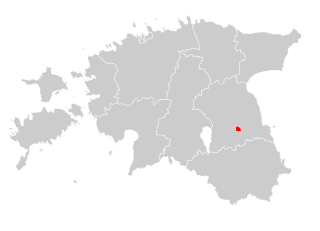
Electoral district no. 10 is one of the 12 multi-member electoral districts of the Riigikogu, the national legislature of Estonia. The district was established as electoral district no. 9 in 1995 following the re-organisation of electoral districts. It was renamed electoral district no. 10 in 2003 following another re-organisation of electoral districts. It is conterminous with the municipality of Tartu. The district currently elects eight of the 101 members of the Riigikogu using the open party-list proportional representation electoral system. At the 2019 parliamentary election it had 67,525 registered electors.
An indirect election took place in Estonia on 30 and 31 August 2021 to elect the president of Estonia, who is the country's head of state. The Riigikogu — the Parliament of Estonia — elected Alar Karis to serve in the office and he was sworn in as the 6th president on 11 October 2021. The incumbent, Kersti Kaljulaid, was eligible to seek reelection to a second, and final, term but failed to gain the endorsement of at least 21 MPs, which is required in order for a candidate to register, as she was outspoken against some of the policies of the government, who thus denied her support.

Electoral district no. 11 is one of the 12 multi-member electoral districts of the Riigikogu, the national legislature of Estonia. The district was established in 1992 when the Riigikogu was re-established following Estonia's independence from the Soviet Union. It was renamed electoral district no. 10 in 1995 following the re-organisation of electoral districts but reverted to electoral district no. 11 in 2003. It is conterminous with the counties of Põlva, Valga and Võru. The district currently elects eight of the 101 members of the Riigikogu using the open party-list proportional representation electoral system. At the 2019 parliamentary election it had 70,706 registered electors.

Electoral district no. 12 is one of the 12 multi-member electoral districts of the Riigikogu, the national legislature of Estonia. The district was established in 1992 when the Riigikogu was re-established following Estonia's independence from the Soviet Union. It was renamed electoral district no. 11 in 1995 following the re-organisation of electoral districts but reverted to electoral district no. 12 in 2003. It is conterminous with the county of Pärnu. The district currently elects seven of the 101 members of the Riigikogu using the open party-list proportional representation electoral system. At the 2019 parliamentary election it had 66,852 registered electors.
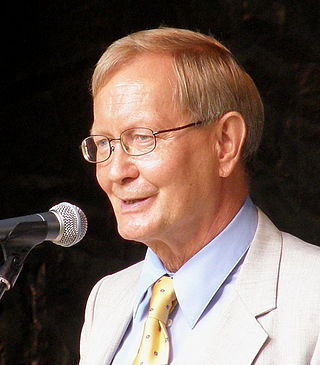
The Estonian presidential election is an indirect election in which the President of Estonia is elected. The first round was held on August 26, 1996, the second and third round on August 27, 1996. As no one reached a sufficient majority in the closed ballot vote of the Riigikogu, the next stage was held on September 20 at the Constituent Assembly. Seated President Lennart Meri was elected for a further term.

Estonia's 2001 presidential election took place from August 27 to September 21, 2001. After three rounds of voting in the Riigikogu and two rounds of voting in the electoral college, Arnold Rüütel was elected President.






















